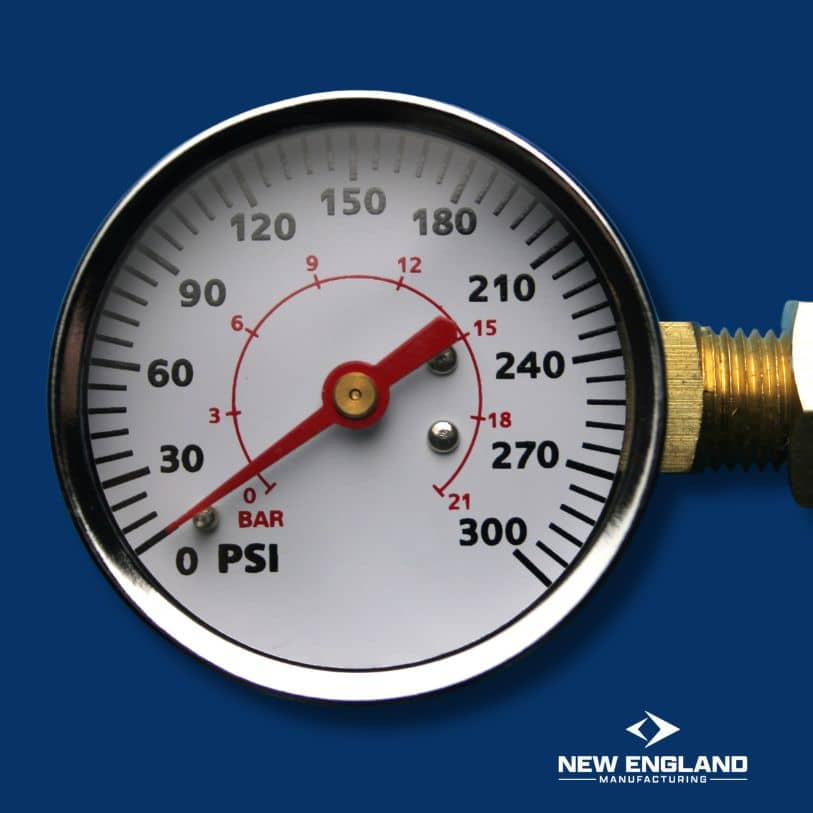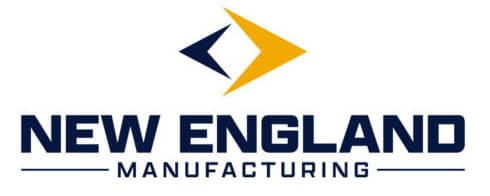What Is Relative Pressure?
Pressure is the basic physical quantity that measures the force exerted on a surface per unit area. It plays a crucial role in several domains, including engineering, meteorology, fire hydrant testing companies, and the automobile sector.
Depending on the reference point, various methods for measuring pressure are used in different sectors and various manufacturing units.
Relative pressure is measured as the difference between absolute pressure and atmospheric pressure (ambient pressure). It is one of the most widely used types of
pressure to get an accurate output. Numerous real-world applications require an understanding of relative pressure and the ability to differentiate it from other forms of pressure.
New England Manufacturing specializes in advanced water flow kits, testing solutions, and pressure gauges, providing precise and reliable measurements for a variety of industries, including utilities, construction, environmental monitoring, and more. With years of experience, they are committed to offering cutting-edge technologies and methods to ensure the accuracy and efficiency of water flow assessments and accurate readouts.
Types of Pressure: Absolute Pressure vs Relative Pressure
Absolute Pressure:
Absolute pressure is the total pressure measured from a vacuum, also known as “absolute zero pressure.” It encompasses both atmospheric pressure and any additional pressure applied to the system. Unlike relative pressure, absolute pressure takes into account the atmospheric pressure acting on the system.
For instance, the absolute pressure at sea level is the atmospheric pressure (approximately 101.3 kPa) plus any extra pressure within a container, such as a pressurized tank.
Relative Pressure (Gauge Pressure):
Relative pressure is the difference between a system’s absolute pressure and the surrounding ambient pressure (typically atmospheric pressure). Commonly referred to as gauge pressure, it is frequently used in applications such as car tires, air conditioning units, and industrial systems. Relative pressure offers a practical way to measure how much pressure is exerted above or below atmospheric pressure, making various measurement tasks easier.
The outcome of corrected pressure would be higher than measured earlier if the latest place is above sea level and lower than measured earlier if the latest location is below sea level.
For example, a tire with a relative pressure of 2 bars indicates that the pressure inside is 2 bars above the atmospheric pressure.
Atmospheric Pressure:
Atmospheric pressure, or ambient pressure, is the pressure exerted by the Earth’s atmosphere. At sea level, it is roughly 101.3 kPa (1 atm).
For example, a vacuum cleaner generates an internal relative pressure by reducing the pressure inside below the ambient atmospheric pressure to collect dust and debris.
Vacuum and Absolute Vacuum:
An absolute vacuum is a state where the pressure is zero (indicating no gas molecules are present).
While this condition is theoretically impossible, highly evacuated environments like outer space or certain laboratory equipment (for example, vacuum chambers) can come close to it. Airtight containers are designed to keep air out, but do not achieve an absolute vacuum unless specifically engineered for that purpose.
Key Terms in Pressure Measurement and Control:
– Manometer: A device used to measure the pressure of gases or liquids, capable of measuring both relative and absolute pressures.
– Pressure Sensor: A device that detects pressure and converts it into a measurable signal, utilized in various systems such as car tires, HVAC systems, and industrial applications.
– Pressure Transmitter: A device that measures and transmits pressure data, typically in digital form, to a control system. Relative pressure transmitters measure pressure about ambient pressure.
– Pressure Gauge: A mechanical or electronic device that visually indicates the relative pressure in a system, often used for measuring tire pressure, tank pressure, or HVAC systems.
– Refrigerant Circuit Pressure: In HVAC and refrigeration systems, the pressure in the refrigerant circuit is usually measured to ensure optimal system performance within the manufacturer’s specified parameters.
Practical Applications of Relative Pressure Measurement
1. Car Tire Pressure:
The pressure in car tires is typically measured relative to atmospheric pressure using a tire pressure gauge. Proper tire pressure is essential for vehicle performance, safety, and fuel efficiency. For instance, a tire might have a relative pressure of 30 psi, indicating it’s 30 psi above atmospheric pressure.
2. Container Pressure:
In containers like gas cylinders or fuel tanks, relative pressure is monitored to ensure safe operation. The internal pressure must remain within specified limits to avoid over-pressurization and potential risks.
3. Engineering and Industrial Applications:
Relative pressure plays a crucial role in fluid dynamics, hydraulic, and pneumatic systems in engineering. Monitoring process pressure is vital to optimizing system efficiency and maintaining safety.
4. Weather and Atmospheric Pressure:
Meteorologists measure atmospheric pressure to predict weather patterns. Fluctuations in atmospheric pressure can signal weather changes, such as approaching storms. Barometers are used to measure this pressure, helping forecast wind, rain, and temperature shifts.
5. Pressure Compensation in Measurement Systems:
Many measurement systems require relative pressure compensation to account for changes in ambient pressure. This is especially crucial in systems operating at varying altitudes or in fluctuating weather conditions. Differential pressure transmitters, for example, often feature sensors that adjust for atmospheric pressure variations to provide accurate relative pressure readings.
Methods for Pressure Compensation:
Absolute Pressure Transmitters:
These devices measure total pressure, including atmospheric pressure, and are useful in situations that demand precise pressure readings, particularly when atmospheric conditions are variable, such as in high-altitude environments.
Sensor Diaphragm Design:
The diaphragm in pressure sensors ensures accurate measurements by compensating for changes in ambient pressure, which helps maintain consistent readings even in fluctuating environmental conditions.
Importance of Measuring Relative Pressure
-Process Control:
In manufacturing and chemical processes, accurate relative pressure measurement is essential for controlling reactions and ensuring product quality. Pressure deviations can lead to inefficiencies, safety hazards, or equipment failure.
-Energy Efficiency:
Systems that regulate relative pressure, like refrigeration and HVAC, are more energy-efficient when pressure is precisely monitored and controlled. For example, maintaining proper refrigerant circuit pressure ensures the system is properly charged, reducing energy consumption and preventing damage.
-Safety and Performance:
Keeping relative pressure within specified limits ensures safety and optimal performance in automotive systems, industrial machinery, or medical devices (like ventilators).
Conclusion
Atmospheric pressure corrected to sea level conditions is known as relative pressure. Meteorologists use relative pressure to compare the pressure situation of one place with another as their location changes from sea level due to a change in altitude.
Relative pressure plays a pivotal role in determining, measuring, and monitoring accurate pressure flow in various conditions. Industries like automobile, fire hydrant testing companies, etc, and sectors like engineering, meteorological departments, manufacturing units, etc.
With respect to the reference point, different kinds of pressure measuring techniques are used, whether above the sea level or below sea level.

Mark R.
With a strong foundation in industrial safety and fire protection systems, Mark R. specializes in creating clear, technical, and compliance-driven content. Writing for SafeTech Reports, he covers topics such as fire hydrant testing, PPE protocols, emergency procedures, and smart technology integration in safety systems. His work ensures that professionals stay informed on the latest regulations, best practices, and emerging trends in safety and infrastructure maintenance.
Get in touch
We usually respond within 24 hours
Need Reliable Water Flow Test Equipment?
For over 70 years, New England Manufacturing has been the trusted source for fire hydrant and water flow testing kits. From pitot gauge kits to custom test kits, we provide precision, durability, and expert calibration to meet your needs.
- Custom-built test kits
- High-quality pressure gauges
- Reliable calibration services


